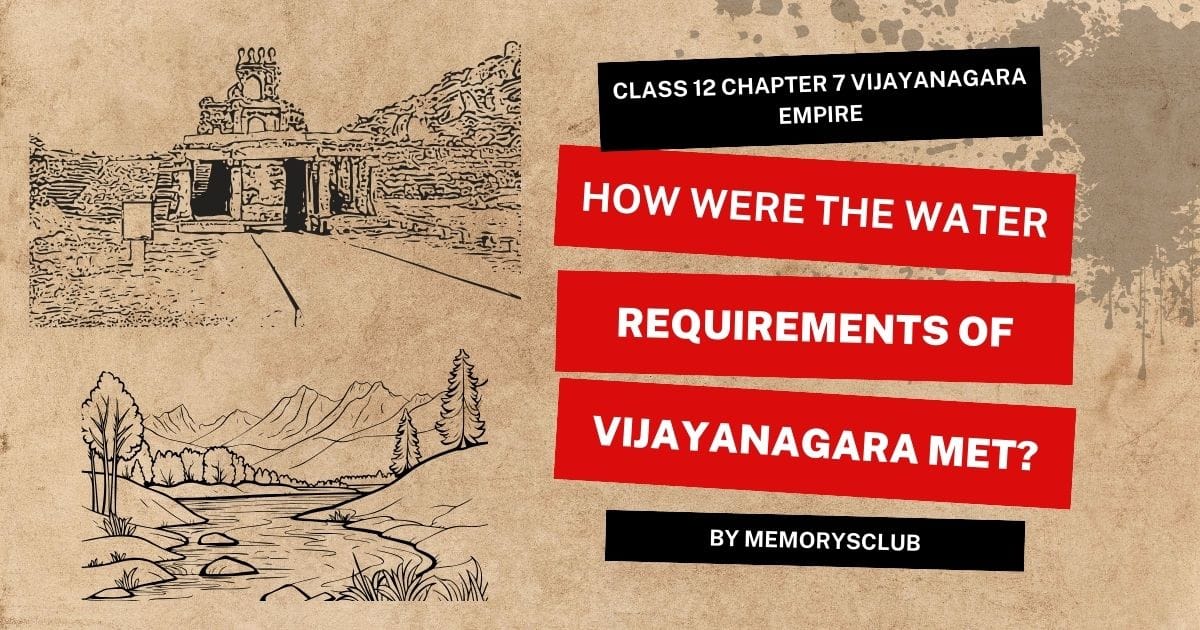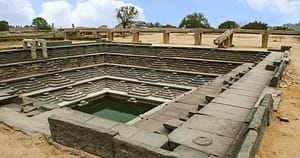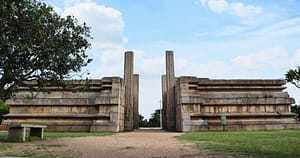How were the water requirements of Vijayanagara met?
Vijayanagara Empire was also known by the name “City of Victory”. The Empire was founded in the 14th century by two brothers named Harihara and Bukka in 1336. The Empire extended from the Krishna River in the north to the extreme south of the peninsula.

Features of water resources of the Vijayanagara Empire
The people of Vijayanagara had a well-organized and elaborate water management system in place to meet their water needs. The Tungabhadra River flowed in a north-easterly direction, creating a natural basin that played a crucial role in the city’s water supply. Additionally, The city was surrounded by stunning granite hills which appeared to encircle it. These rocky outcrops had streams flowing down from them to the river.
The Vijayanagara Empire utilized several features and methods to meet its water requirements:
Tanks and Reservoirs: One of the most significant features of Vijayanagara’s water management system was the building of tanks and reservoirs. These structures were built to keep and store rainwater during the monsoon season for later use during dry years. The Rayagopura tank and the Kamalapura tank are notable examples of such reservoirs.

Canals and Aqueducts: The many canals constructed by the Sangam Dynasty king. The Empire king built an extensive network of canals and aqueducts to transport water from rivers and reservoirs to various parts of the kingdom, including agricultural lands, urban centers, and palace complexes. The Hiriya Canal was one of the most essential water management systems. This canal drew water from a dam built across the Tungabhadra and irrigated the cultivated fields.
Water Management in Hampi: Hampi, the capital of the Vijayanagara Empire, had a sophisticated water management system. The city was divided into zones, each with its network of tanks and wells. The infrastructure was designed to cater to the needs of the residents as well as the agricultural lands surrounding the city.
Water Harvesting Techniques: Apart from large-scale infrastructure projects, Vijayanagara also employed smaller-scale water harvesting techniques such as rooftop rainwater harvesting and the construction of small check dams to capture runoff water from hilly terrain.

Wells: Wells was another vital source of water for both urban and rural areas. The empire dug numerous wells across its territories to tap into groundwater reserves.
These features contributed to the empire’s prosperity and facilitated the growth of its urban centers and agricultural economy. If you want to read more about the imperial capital of Vijayanagara question answer to search on Google “memorysclub”.
